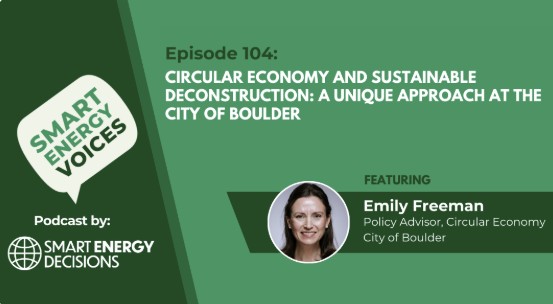Meet three women working (and succeeding) at establishing Colorado (CO) as a leader in the circular economy through innovations, policies, and sustainable solutions.
Our Circular Economy Editor, Cynthia Milota, recently connected with three circular economy leaders at the Circularity conference in Denver. Emily Freeman, Policy Advisor, Circular Economy at the City of Boulder; Laurie Johnson, Founder and CEO of Circular Colorado and Liz Chapman, PhD, former Executive Director of Recycle Colorado.

WDM: First, share a bit about how your background, education, and experience shaped your work and perspective.
Emily Freeman: In looking back on what influenced my life and career, living and working for three years in Japan was pivotal – in how the country managed its waste, values materials, and uses innovative construction techniques that make buildings not only earthquake resistant but also easier to deconstruct into pieces. My time in Japan also gave me the confidence to succeed in challenging environments.
Laurie Johnson: As the founder and CEO of Circular Colorado and the Director of Colorado’s new Circular Economy Development Center, my mission is to establish CO as a leader in developing circular economy solutions. My early career experience turning around an underperforming YMCA taught me that this work is community based, whether the community is local or global.
Listen to Laurie: Circular Colorado & Brave Industries are Revolutionizing Recycling
Liz Chapman: I am a life-long educator that enjoys learning with others in a variety of contexts. My skills and experience make me adept at facilitating diverse perspectives when brokering solutions. I am doing what I can to minimize my negative impact and maximize my contributions to building a sustainable world. I strive to help others to do the same.
Listen to Liz: Sustainability in Progress: Waste and Recycling in Colorado
WDM: Tell us about your work and passion in the circular economy space.
Emily Freeman: Boulder’s deconstruction ordinance has been in effect since July 1, 2020, and requires all residential and commercial buildings to divert 75% of materials by weight, for reuse and recycling and must include three or more different material types. There is a refundable deposit of $1 per square foot, with a minimum of $1,500 for all buildings.
To date, Boulder has diverted 73,596 tons – or the equivalent of 83% of building materials from the landfill.
This highlights how effective, a forward-thinking policy coupled with strong-end markets can drive the building and deconstruction industry to efficiently managed materials and dramatically reduce landfill rates.

Liz Chapman: In my early career I was an outdoor educator, fostering a sense of stewardship for the environment. I was also an adjunct faculty member at a community college, before I embarked on a series of advisory and executive director roles. My PhD “Talking Trash: Bringing Research into Action while Reducing Household Waste,” explored “how transforming consumer attitudes towards waste is a vital piece of sustainable waste management.” Exploring the term “catalyzing stewardship” we can describe how participants engaged others in waste reduction.
In other parts of the world, there is not so much land. Until “waste is in your face” you don’t deal with it.
We have to create positive associations with waste materials, employing “sticks with incentives” to get people in CO, “the land with so much land,” to change their behaviors in relation to waste. A sense of personal responsibility is lacking in the western industrialized world where someone else can deal with it.

WDM: Share with our audience how they can use your lessons learned to build strategies for their organizations.
Laurie Johnson: Approach all projects from the business case perspective. Projects have to pencil, and if there’s a circular economy aspect that’s a bonus to the community. Efficiencies are created when systems reach critical mass.
At the Circularity 25 conference workshop, we outlined a roadmap to build a circular ecosystem which includes:
- Explore the challenge
- Identify the gaps
- Develop the strategy
- Organize the players
- Execute the solution
- Manage the process to completion.
Circular Colorado serves as the ringleader, securing dedicated funding and establishing targets and deadlines while publicly sharing progress.
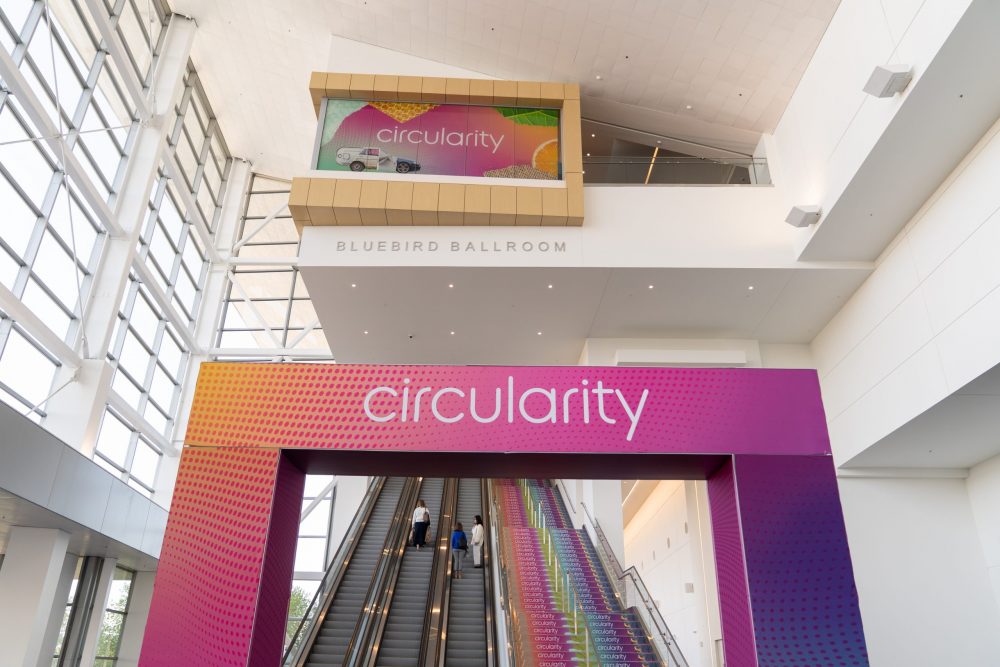
Emily Freeman: The U.S. has become entrenched and fascinated with the rawness of demolitions – seeing a building crushed or imploded fascinates everyone from my five-year old to his grandparents. While demolitions quickly remove a building for redevelopment, they disregard the enormous amount of natural resources and carbon intensity of transporting and manufacturing them into building components. To transition away from this linear economy and make deconstruction the norm, there needs to be a combination of:
- Policy
- Workforce development
- Supportive economic drivers such as deductions using the IRS tax code and 501(c)3 non-profits to accept the building materials
- Practical, logistical solutions such as storage and utilizing technology to prepare and get salvaged items back to market.
This sounds like a lot, but we are thinking about this systemically, and most of these components are there to various degrees.
It’s a matter of mainstreaming them showing other municipalities and private entities deconstructions value to meeting their climate goals.
WDM: Colorado has become a leader in developing circular economy initiatives. Share with our readers some of your most effective programs.
Liz Chapman: As a member of the Colorado Producer Responsibility Advisory Board, the group advises on the state’s new program which requires producers to fund and manage the end-of-life of their packaging and paper products, shifting the responsibility from local governments and taxpayers to the producers themselves.
As of March 2025, five states, California, Colorado, Maine, Minnesota and Oregon have enacted Extended Producer Responsibility (EPR) laws for packaging. In Colorado, this legislation will expand access to convenient recycling services, increase recycling rates, standardize a list of readily recyclable materials, support and contribute to the circular economy resulting in new jobs, and reduce greenhouse gas emissions by an estimated 1.2 million metric tons of carbon dioxide (equivalent to 247,000 car’s worth) annually by 2035. Bonus Resource: Recycling for all Coloradans.

Emily Freeman: Deconstruction and reuse are the cheapest ways to drastically lower the embodied carbon, plus it uses materials that are already made and are tariff-free.
Salvage lumber, referred to as used sawn lumber in the industry, presents a unique policy opportunity to preserve and save forests. In Colorado, on average 55 to 60 virgin trees or put another way, 1.5 acres of forest must be clear-cut for each new home – imagine if we could lower these numbers by utilizing lumber that had already been harvested? Oregon and Washington have passed statewide legislation defining and allowing the reuse of salvaged lumber. In Boulder and through-out Colorado, we are looking to mirror this language and create a pathway for lumber from deconstructed buildings to be re-incorporated. Without this policy, there are roadblocks both for developers, designers and architects who may shy away from salvaged lumber because the building code and legislation haven’t created a clear path for this reuse, therefore, technological solutions are slower to launch because the market isn’t yet ripe.
I believe policy can play a major role in jumpstarting incentives reuse and creating pathways in which deconstructed materials can become circular building materials.
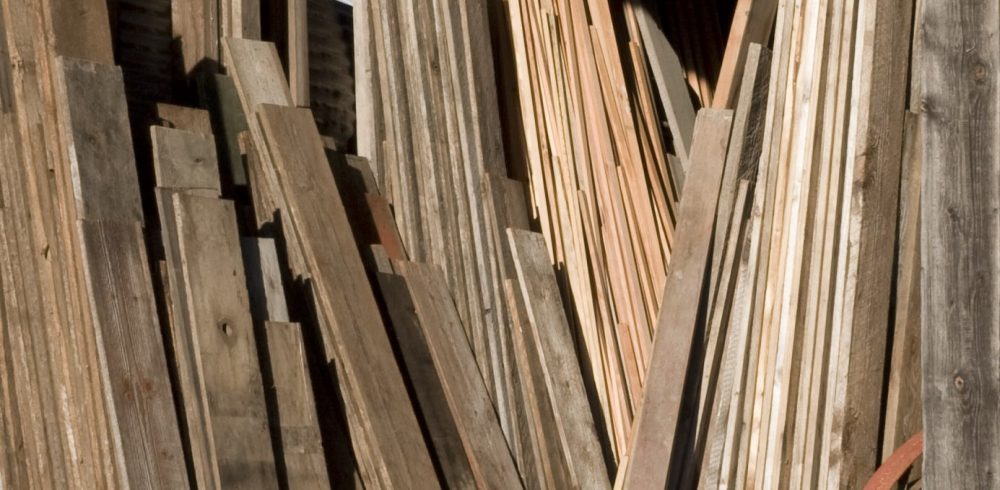
Laurie Johnson: Circular Colorado, working together with three other agencies, the Colorado Circular Communities Enterprise, the Circular Transportation network and the Circular Economy Development Center are creating a supportive ecosystem for circular businesses.
PRETRED uses waste tires to manufacture recycled rubber road barriers.
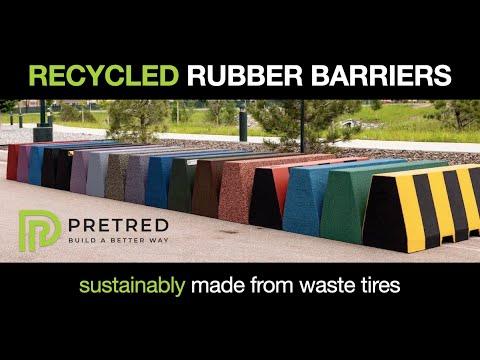
TERSUS SOLUTIONS uses liquid CO2 based waterless cleaning technology in textile reclamation and resale logistics services in the recommerce, down cycling, and fire/military/PPE industries.
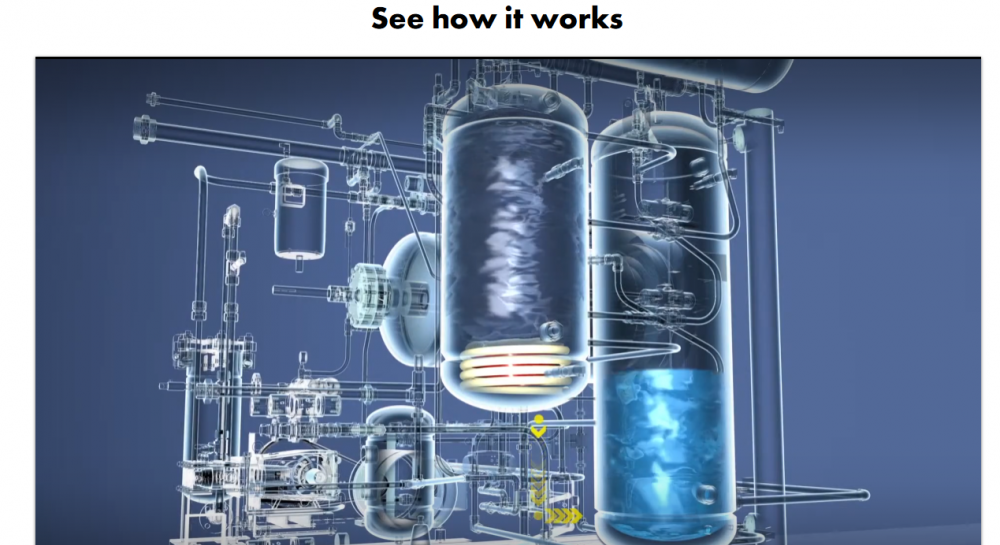
WDM: Any final thoughts to share with our readers about circularity.
Laurie Johnson: When working with young people, seeing is believing. We think that a field trip to a MRF (materials recycling center) or a waste water treatment plant should be required for all high school students. The visual of where that stuff you put in the trash ends up…is powerful.
Emily Freeman: I encourage readers to engage with your local government, city council, green building guilds and councils to find out what actions they are invested in and could use your support. Policy does not have to be punitive. Policy can be a way to drive innovation while providing environmental, economic and social benefits to your community.
Liz Chapman: People generally believe in the value of material capture and conservation. However, there is often a chasm that separates various points of view. But there is always one common interest. We need to find those commonalities and build a bridge in order to move forward.
Ready to Learn More?
Read Dr. Chapman’s publications:
- Talking Trash: Bringing Research into Action while Reducing Household Waste
- City of Aspen Single Use bag study – Journal of Sustainability Education
- Increasing Public Participation in Municipal Solid Waste Reduction (MSW)- Geographic Bulletin

